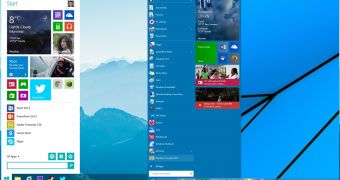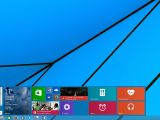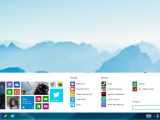Design concepts from talented artists across the world are surely a great way to have a look at different interpretations of new products that are yet to be launched, but in most of the cases, parent companies that are in charge of the actual products pretty much ignore all these ideas.
It appears that this isn’t the case of Microsoft, as the design of the new Windows 10 seems to be more or less inspired by a concept created by Jay Machalani a long time ago, before the new operating system came to be and was still called Windows 9.
The Verge also spotted the similarities between this concept and Microsoft’s very own Windows 10 desktop design, and it appears that Redmond was indeed so interested in his approach that it invited Machalani to its headquarters to discuss all his ideas in detail.
Not much is known about the inspiration behind Windows 10’s desktop design, but a company representative told the source that Microsoft was often checking out these concepts.
"It was great to meet Jay and hear his design thinking," Albert Shum, general manager of design and content at Microsoft, was quoted as saying by the aforementioned source. "We always love engaging with smart, passionate people who look at the world and see new possibilities."
Identical Start menus
The resemblance between the concept and the actual design in Windows 10 is pretty much obvious when looking at the Start menu.
Even though the concept is not as polished as the final product, Machalani used a similar approach, with live tiles on the Start menu and a resizable mode that allowed the menu to expand as the user added new tiles.
The same is now available in Windows 10, and the Start menu mixes traditional software with Modern apps in a fresh design that clearly reminds of the concept.
What’s more surprising is that, despite all Microsoft’s refinements, Machalani’s concept still seems a bit more eye appealing, mostly thanks to the white background that he used for the Start menu.
No Charms bar and windowed Metro apps
The similarities between the concept and Windows 10 do not stop here. Machalani was among the first designers to propose a new approach for Modern apps that would allow users to launch them in their very own windows right on the desktop, as is the case of traditional software.
What’s more, his concept envisions a revamp of the Charms bar that would no longer be available from the desktop, but directly integrated into Modern apps for faster access when running programs which actually need these charms.
It’s probably a good thing to learn that Microsoft is actually keeping an eye on all these concepts, but don’t be too surprised if Redmond uses them as living proof that it’s actually listening to user feedback.

 14 DAY TRIAL //
14 DAY TRIAL // 





